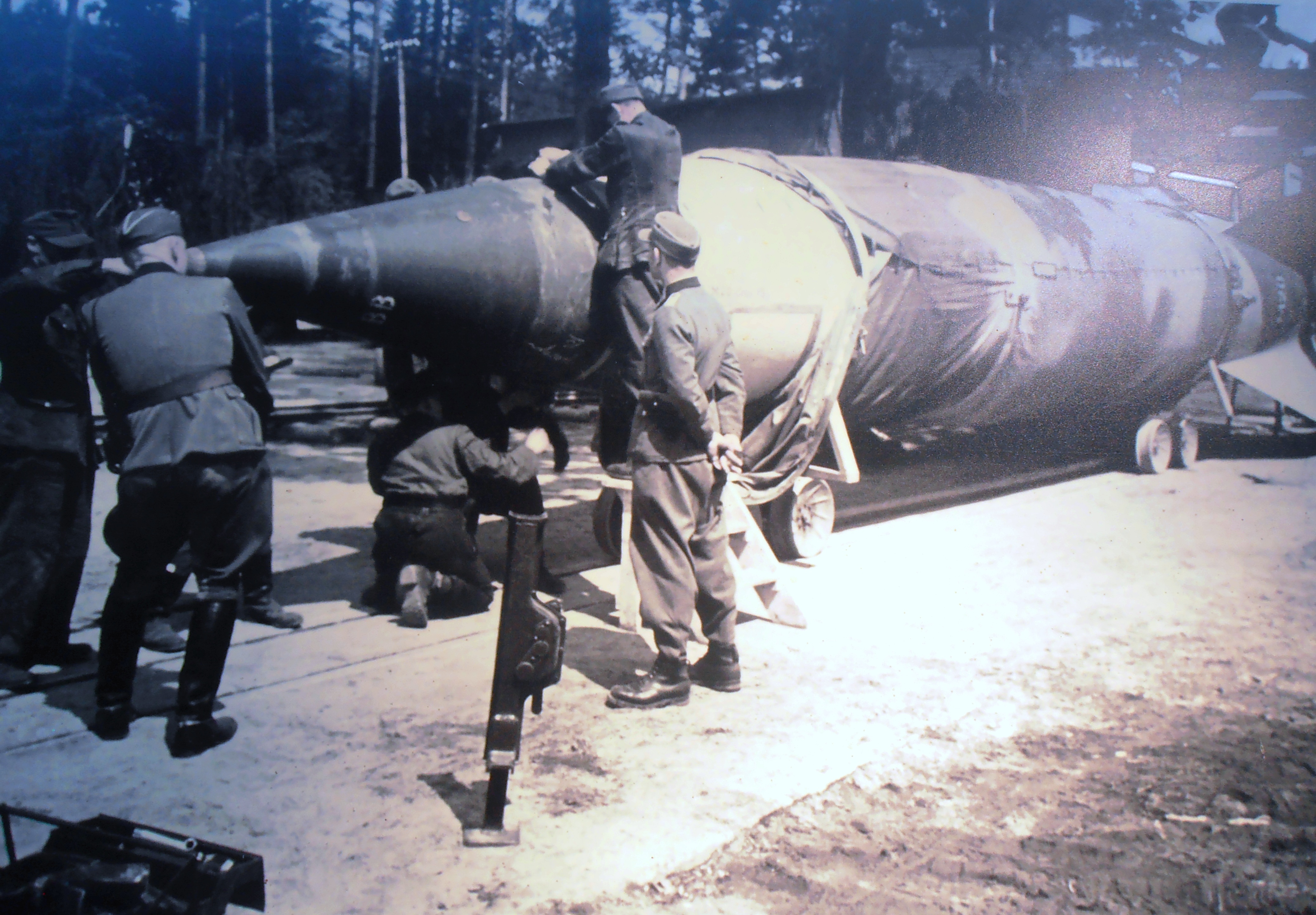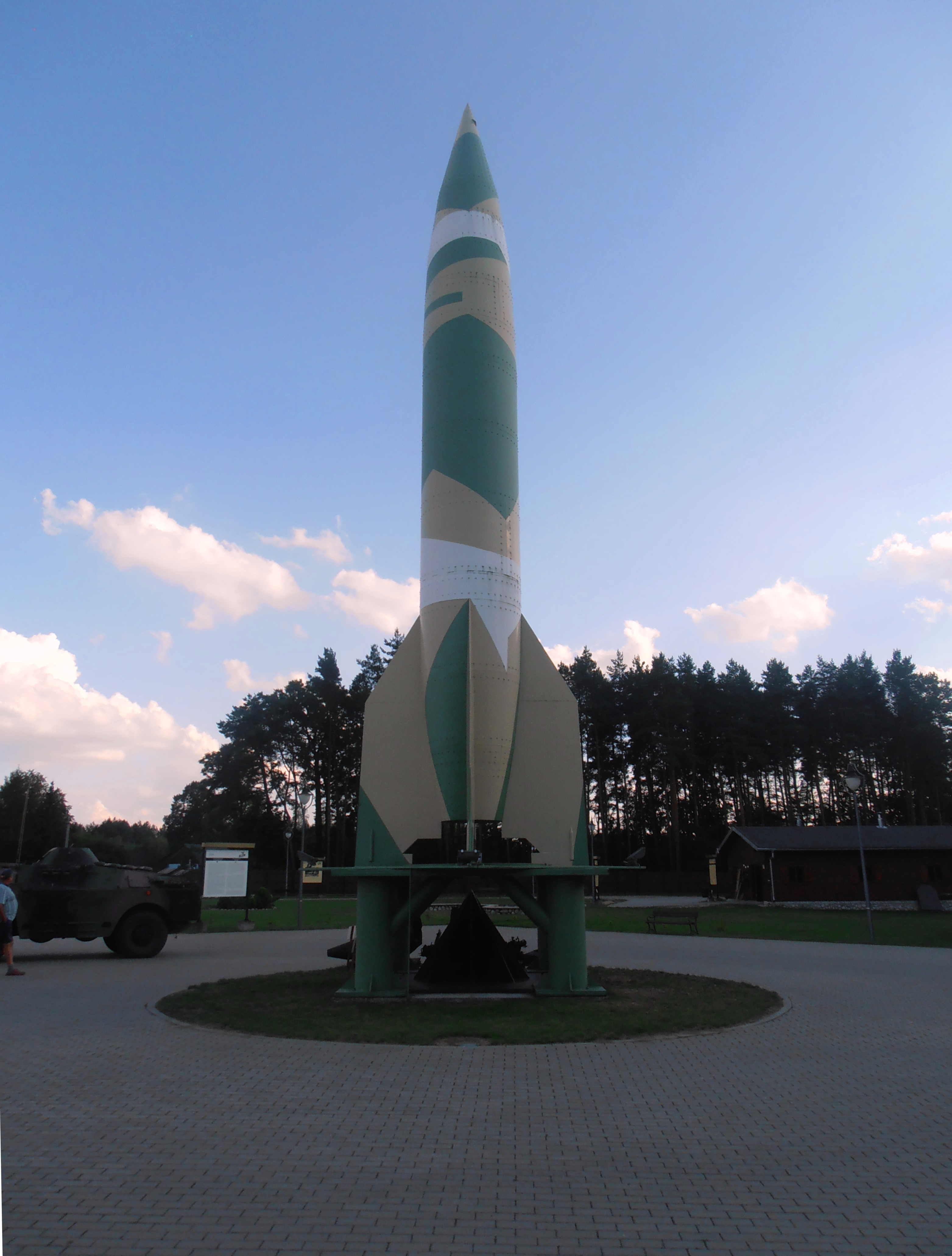Blizna, Subcarpathian Voivodeship on:
[Wikipedia]
[Google]
[Amazon]
Blizna is a
 From 5 November 1943 to early July 1944 there was an SS
From 5 November 1943 to early July 1944 there was an SS  The missile testing ground at Blizna was quickly located by the Polish resistance movement, the
The missile testing ground at Blizna was quickly located by the Polish resistance movement, the  In July 1944 the advance of Soviet troops forced the base at Blizna to be evacuated and launch activities were moved to the Tuchola Forest.
In July 1944 the advance of Soviet troops forced the base at Blizna to be evacuated and launch activities were moved to the Tuchola Forest.

village
A village is a clustered human settlement or community, larger than a hamlet but smaller than a town (although the word is often used to describe both hamlets and smaller towns), with a population typically ranging from a few hundred to ...
in the administrative district of Gmina Ostrów
__NOTOC__
Gmina Ostrów is a rural gmina (administrative district) in Ropczyce-Sędziszów County, Subcarpathian Voivodeship, in south-eastern Poland
Poland, officially the Republic of Poland, is a country in Central Europe. It is divi ...
, within Ropczyce-Sędziszów County, Subcarpathian Voivodeship, in south-eastern Poland. It lies approximately north of Ostrów, north of Ropczyce, and north-west of the regional capital Rzeszów. It has a population of about 250.
History
World War II
 From 5 November 1943 to early July 1944 there was an SS
From 5 November 1943 to early July 1944 there was an SS military base
A military base is a facility directly owned and operated by or for the military or one of its branches that shelters military equipment and personnel, and facilitates training and operations. A military base always provides accommodations for ...
near Blizna, from which 139 A4 (also known as V-2) rockets were launched for experimental purposes and for training. Zak, Anatoly: RussianSpaceWeb.Com: 2009 Jena1806.Com: 2009 After the air raid on Peenemünde on 17 August 1943 it was decided that the training and testing should be done in southeast Poland outside of the range of the Allied
An alliance is a relationship among people, groups, or states that have joined together for mutual benefit or to achieve some common purpose, whether or not explicit agreement has been worked out among them. Members of an alliance are called ...
bombers. However test launches also continued at Peenemuende until 21 February 1945.
Because the rockets launched from Blizna - in contrast to the rockets launched from Peenemünde - flew over a populated area, there was also some destruction of buildings. Wernher von Braun, a central figure in Germany's pre-war rocket development program, and post-war director of NASA
The National Aeronautics and Space Administration (NASA ) is an independent agency of the US federal government responsible for the civil space program, aeronautics research, and space research.
NASA was established in 1958, succeeding t ...
's Marshall Space Flight Center
The George C. Marshall Space Flight Center (MSFC), located in Redstone Arsenal, Alabama (Huntsville postal address), is the U.S. government's civilian rocketry and spacecraft propulsion research center. As the largest NASA center, MSFC's first ...
, worked at the Blizna test site and personally visited the test missile impact areas to troubleshoot any problems discovered during trials. Gatland, Kenneth William: Project Satellite: 1958 p82
 The missile testing ground at Blizna was quickly located by the Polish resistance movement, the
The missile testing ground at Blizna was quickly located by the Polish resistance movement, the Armia Krajowa
The Home Army ( pl, Armia Krajowa, abbreviated AK; ) was the dominant resistance movement in German-occupied Poland during World War II. The Home Army was formed in February 1942 from the earlier Związek Walki Zbrojnej (Armed Resistance) esta ...
thanks to reports from local farmers. Armia Krajowa field agents even managed to obtain pieces of the fired rockets, by arriving on the scene before German patrols. In early March 1944, British Intelligence Headquarters received a report of an Armia Krajowa
The Home Army ( pl, Armia Krajowa, abbreviated AK; ) was the dominant resistance movement in German-occupied Poland during World War II. The Home Army was formed in February 1942 from the earlier Związek Walki Zbrojnej (Armed Resistance) esta ...
agent (code name: ''‘Makary’'') who had covertly surveyed the Blizna railway line and observed a freight car heavily guarded by SS troops containing ''‘an object which, though covered by a tarpaulin, bore every resemblance to a monstrous torpedo’''. Subsequently, a plan was formed to make an attempt to capture a whole unexploded V-2 rocket
The V-2 (german: Vergeltungswaffe 2, lit=Retaliation Weapon 2), with the technical name ''Aggregat 4'' (A-4), was the world’s first long-range guided ballistic missile. The missile, powered by a liquid-propellant rocket engine, was developed ...
and transport it to Britain. Around 20 May 1944, a relatively undamaged V-2 rocket fell on the swampy bank of the Bug River near the village of Sarnaki and local Poles managed to hide it before German arrival. The rocket was then dismantled and smuggled across Poland. In late July 1944, the Polish resistance (Home Army and V1 and V2
Military intelligence on the V-1 flying bomb, V-1 and V-2 rocket, V-2 weapons developed by the Germans for attacks on the United Kingdom during the Second World War was important to countering them. Intelligence came from a number of sources and ...
) secretly transported parts of the rocket out of Poland in Operation Most III (Bridge III), for analysis by British intelligence.
 In July 1944 the advance of Soviet troops forced the base at Blizna to be evacuated and launch activities were moved to the Tuchola Forest.
In July 1944 the advance of Soviet troops forced the base at Blizna to be evacuated and launch activities were moved to the Tuchola Forest.

References
* *Bibliography
* * * Władysław Góra, Wojna i okupacja ziemiach na Polskich 1939-1945, Wydawnictwo Książka i Wiedza, Warszawa 1984,Notes
External links
* https://web.archive.org/web/20060614113829/http://astronautix.com/sites/heilager.htm {{coord, 50, 11, N, 21, 36, E, region:PL_type:city, display=title Villages in Ropczyce-Sędziszów County Spaceports in Europe V-2 missile launch sites